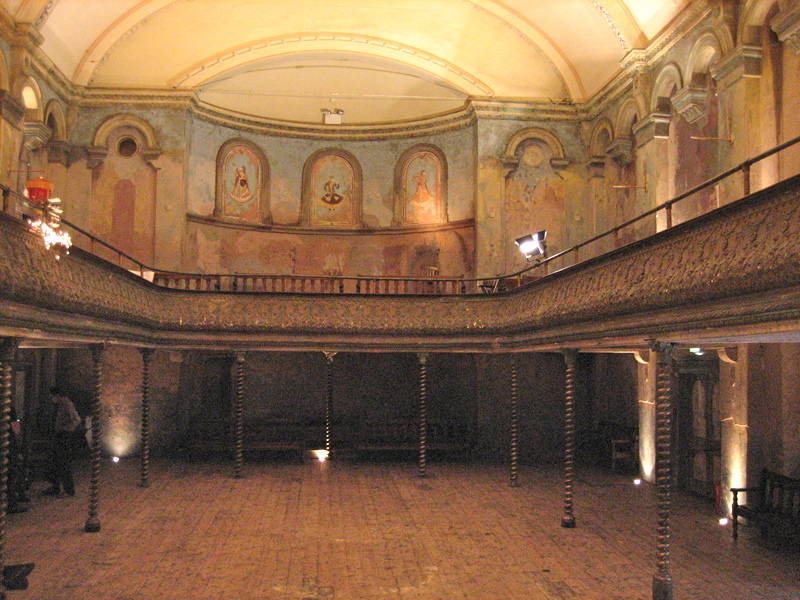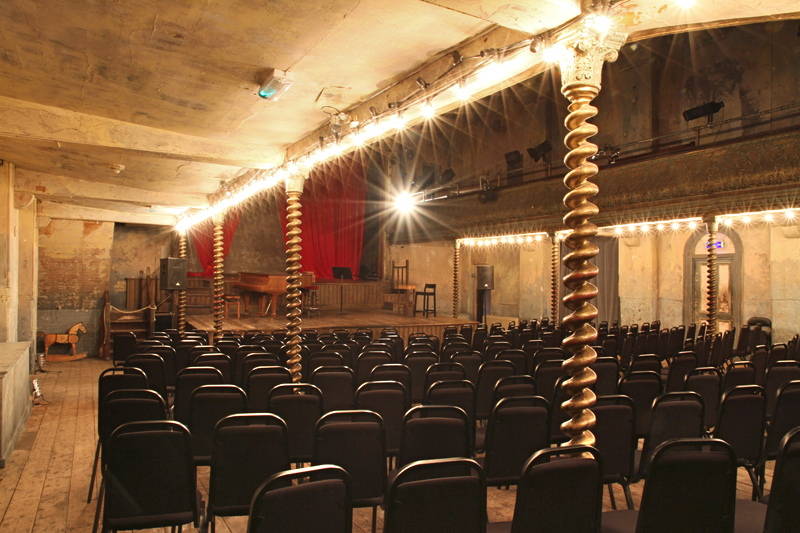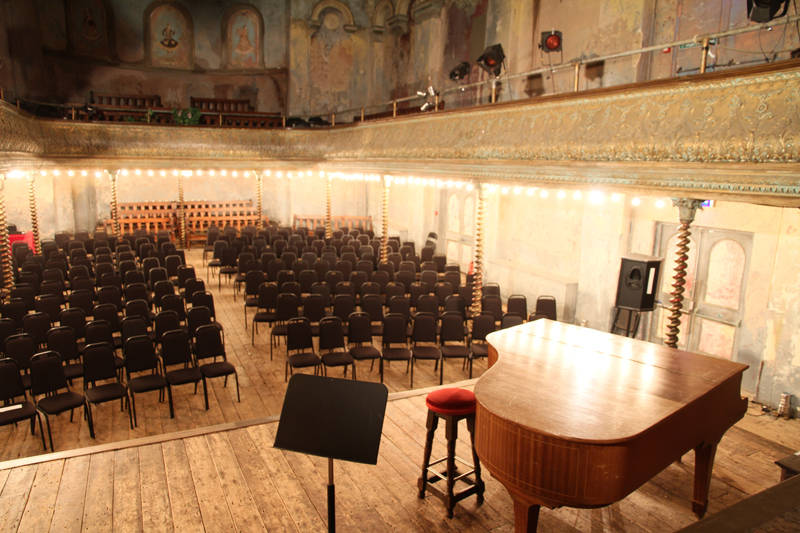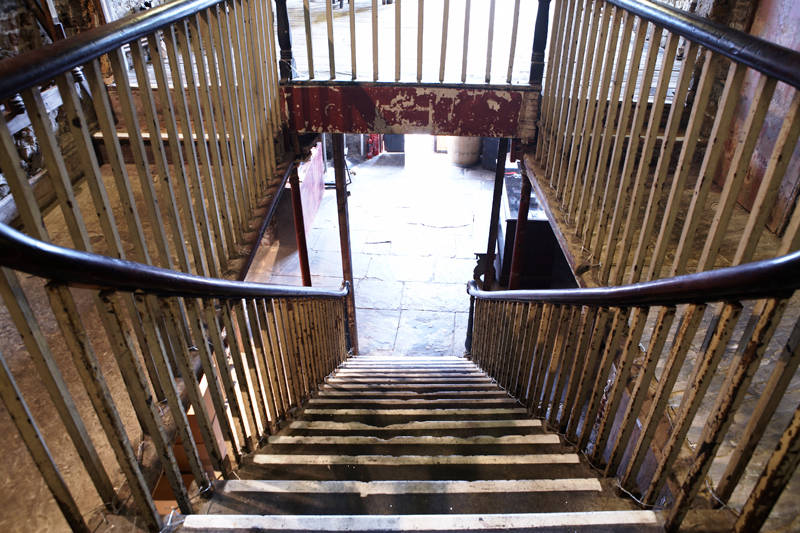Photographs by James Perry and Mike Twigg. Text by Oona Patterson. Formatting and image correction by George P. Landow. [You may use these images without prior permission for any scholarly or educational purpose as long as you (1) credit the photographer and (2) link your document to this URL in a web document or cite the Victorian Web in a print one.]

Auditorium, Wilton's Music Hall Graces Alley, London. “Wilton’s is the oldest surviving Grand Music Hall in the world. It belongs to the first generation of public house music halls that appeared in London during the 1850s and which, only fifty years later, had all but disappeared.” John Wilton converted 5 terraced houses into Wilton's Music Hall, which opened in 1858, but its “heyday as a music hall was short-lived: just twenty-two years. Several landlords followed after John Wilton and, in 1880, performances ceased when his final successor was unable to renew the licence due to new fire regulations.” — Wilton's: The City's Hidden Stage
“When it opened in 1859, top acts from Covent Garden would run across town to perform on John Wilton’s stage to an auditorium crammed with up to fifteen hundred revellers, drinking and enjoying the evening’s fascinating entertainment. ‘Champagne Charlie’ who famously drank from a bottle of champagne whilst singing on stage appeared many times at Wilton’s and it was said that the hall was better known than St Paul’s. The pub had beautiful mahogany fittings and became known as the Mahogany Bar (see below).” — “The History” (courtesy Oona Patterson)


(b) The music hall's current exterior. (c) View from the back of the Hall towards the stage. [Click on these images and those below to enlarge them.]



(d) View from the stage. (e) and (f) The Mahogany Bar.



Left to right: (g) Office. (h) Staircase to the balcony. (i) The basement of the theatre.
Resources
Wilton's: The City's Hidden Stage. Web. The theatre's own site. 24 August 2011.
border="0"/>Last modified 24 August 2011